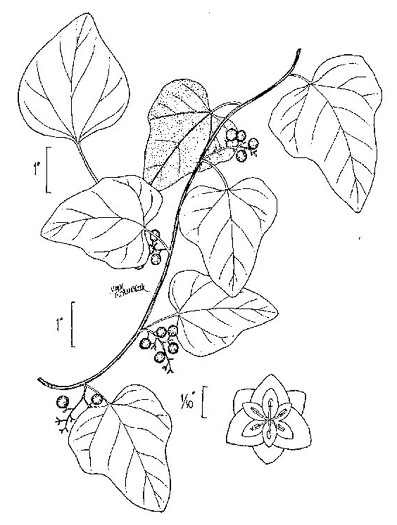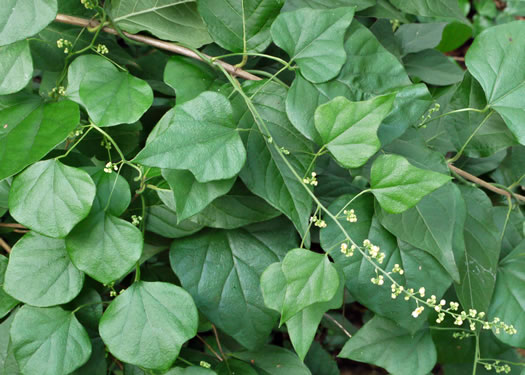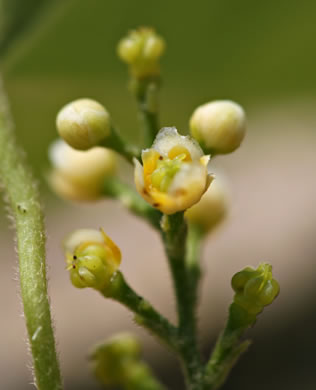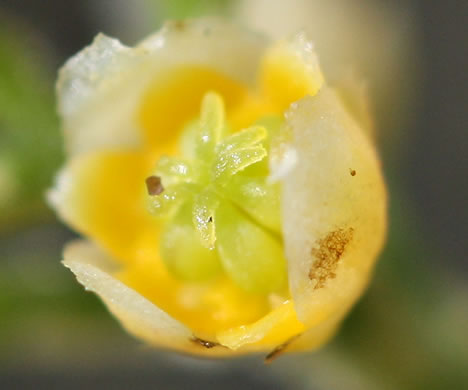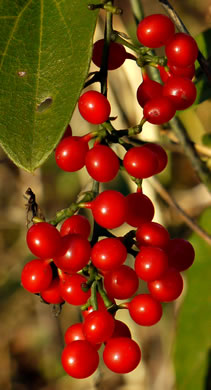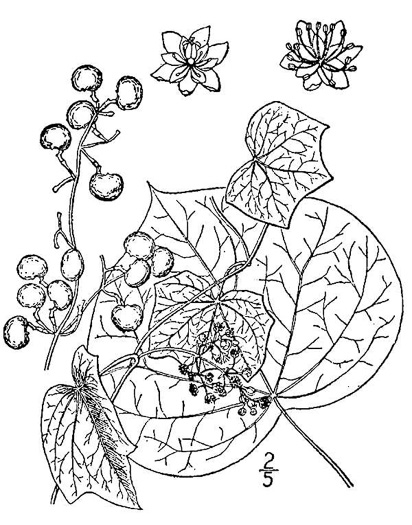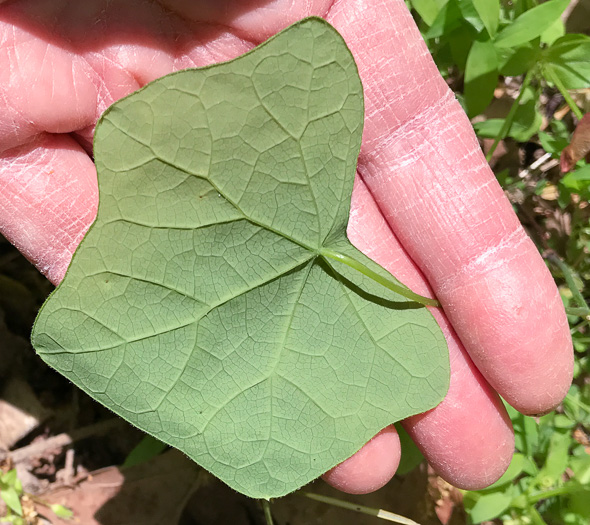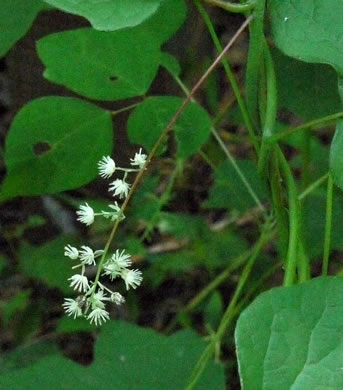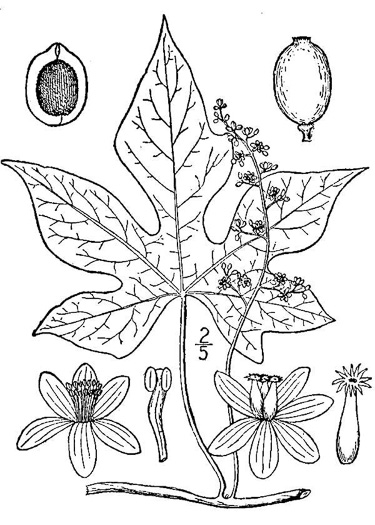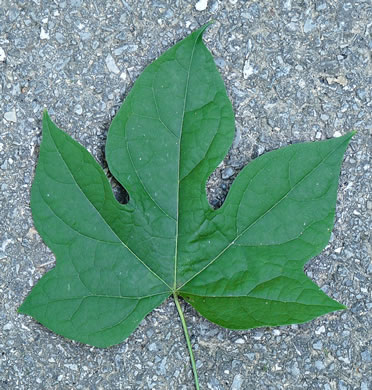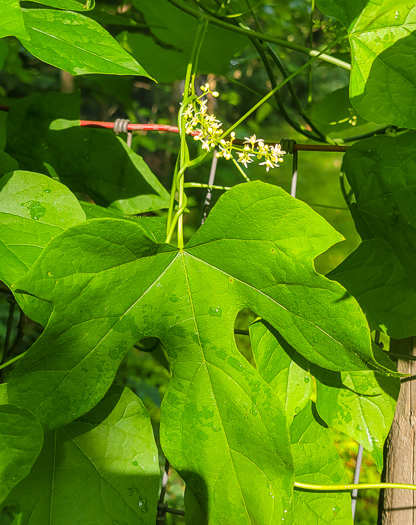Hovering over an image will enlarge it and point out features (works better on desktop than on mobile).
![]() A camera indicates there are pictures.
A camera indicates there are pictures.
![]() A speaker indicates that a botanical name is pronounced.
A speaker indicates that a botanical name is pronounced.
![]() A plus sign after a Latin name indicates that the species is further divided into varieties or subspecies.
A plus sign after a Latin name indicates that the species is further divided into varieties or subspecies.
Most habitat and range descriptions were obtained from Weakley's Flora.
Your search found 3 taxa in the family Menispermaceae, Moonseed family, as understood by Vascular Flora of the Carolinas.

![]()
![]() Common Name:
Carolina Moonseed, Coralbeads, Carolina Snailseed, Red Moonseed
Common Name:
Carolina Moonseed, Coralbeads, Carolina Snailseed, Red Moonseed
Weakley's Flora: (4/14/23) Nephroia carolina FAMILY: Menispermaceae
SYNONYMOUS WITH PLANTS National Database: Cocculus carolinus FAMILY: Menispermaceae
SYNONYMOUS WITH Vascular Flora of the Carolinas (Radford, Ahles, & Bell, 1968): Cocculus carolinus 079-01-001 FAMILY: Menispermaceae
Habitat: Moist to dry forests and thickets, especially where calcareous, also weedy in landscaped areas
Common (uncommon in NC)
Native to the Carolinas & Georgia

![]()
![]() Common Name:
Moonseed, Yellow Parilla
Common Name:
Moonseed, Yellow Parilla
Weakley's Flora: (4/24/22) Menispermum canadense FAMILY: Menispermaceae
SYNONYMOUS WITH PLANTS National Database: Menispermum canadense FAMILY: Menispermaceae
SYNONYMOUS WITH Vascular Flora of the Carolinas (Radford, Ahles, & Bell, 1968): Menispermum canadense 079-02-001 FAMILY: Menispermaceae
Habitat: Moist nutrient-rich forests, especially on floodplains or lower slopes, less commonly in dry calcium-rich forests and woodlands
Common in NC Mountains & NC Piedmont, uncommon to rare elsewhere in GA-NC-SC
Native to the Carolinas & Georgia

![]() Common Name:
Cupseed, Lyonia-vine
Common Name:
Cupseed, Lyonia-vine
Weakley's Flora: (4/24/22) Calycocarpum lyonii FAMILY: Menispermaceae
SYNONYMOUS WITH PLANTS National Database: Calycocarpum lyonii FAMILY: Menispermaceae
Habitat: Mesic upland, riparian, and bottomland forests, stream banks, wet hammocks
Rare
Native to Georgia
Your search found 3 taxa. You are on page PAGE 1 out of 1 pages.

